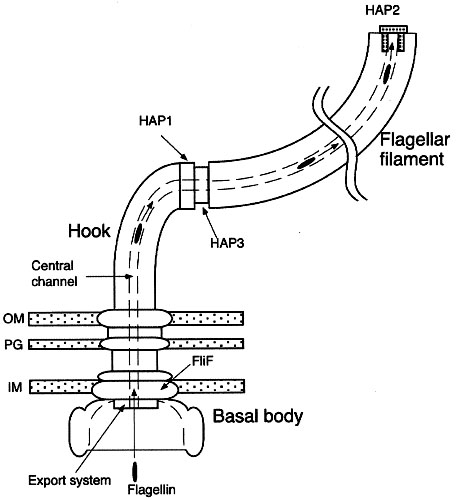@spendius,
Evasion of what -- the ridiculous Discovery Institute and their ridiculous spin of "Irreducible Complexity" involving the Flagellum?
The Flagellum Unspun
The Collapse of "Irreducible Complexity"
Kenneth R. Miller
Brown University
Providence, Rhode Island 02912 USA
This is a pre-publication copy of an article that will appear in volume entitled "Debating Design: from Darwin to DNA," edited by Michael Ruse and William Dembski, which will be published by Cambridge University Press volume in 2004. I will provide exact citation information for the article when the volume is published.
Almost from the moment The Origin of Species was published in 1859, the opponents of evolution have fought a long, losing battle against their Darwinian foes. Today, like a prizefighter in the late rounds losing badly on points, they've placed their hopes in one big punch " a single claim that might smash through the overwhelming weight of scientific evidence to bring Darwin to the canvas once and for all. Their name for this virtual roundhouse right is "intelligent design."
In the last several years, the intelligent design movement has attempted to move against science education standards in several American states, most famously in Kansas and Ohio (Holden 1999; Gura 2002). The principal claim made by adherents of this view is that they can detect the presence of "intelligent design" in complex biological systems. As evidence, they cite a number of specific examples, including the vertebrate blood clotting cascade, the eukaryotic cilium, and most notably, the eubacterial flagellum (Behe 1996a, Behe 2002).

Of all these examples, the flagellum has been presented so often as a counter-example to evolution that it might well be considered the "poster child" of the modern anti-evolution movement. Variations of its image (Figure 1) now appear on web pages of anti-evolution groups like the Discovery Institute, and on the covers of "intelligent design" books such as William Dembski's No Free Lunch (Dembski 2002a). To anti-evolutionists, the high status of the flagellum reflects the supposed fact that it could not possibly have been produced by an evolutionary pathway.
Figure 1: The eubacterial flagellum. The flagellum is an ion-powered rotary motor, anchored in the membranes surrounding the bacterial cell. This schematic diagram highlights the assembly process of the bacterial flagellar filament and the cap-filament complex. OM, outer membrane; PG, peptidoglycan layer; IM, cytoplasmic membrane (From Yonekura et al 2000).
Article continues:
http://www.millerandlevine.com/km/evol/design2/article.html
Perhaps if you could locate one, instead of a stone you'd like a flagellum in your soup?